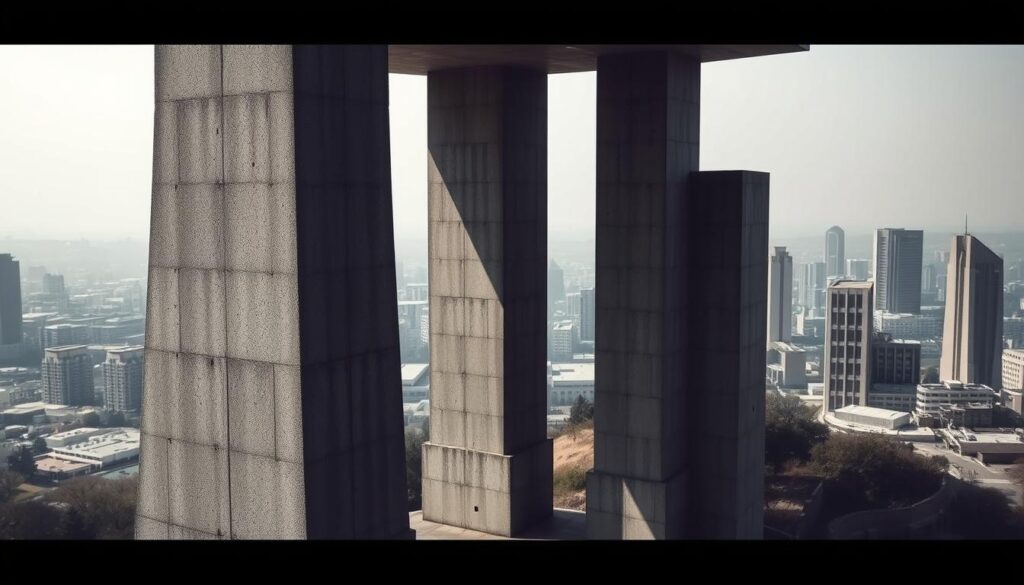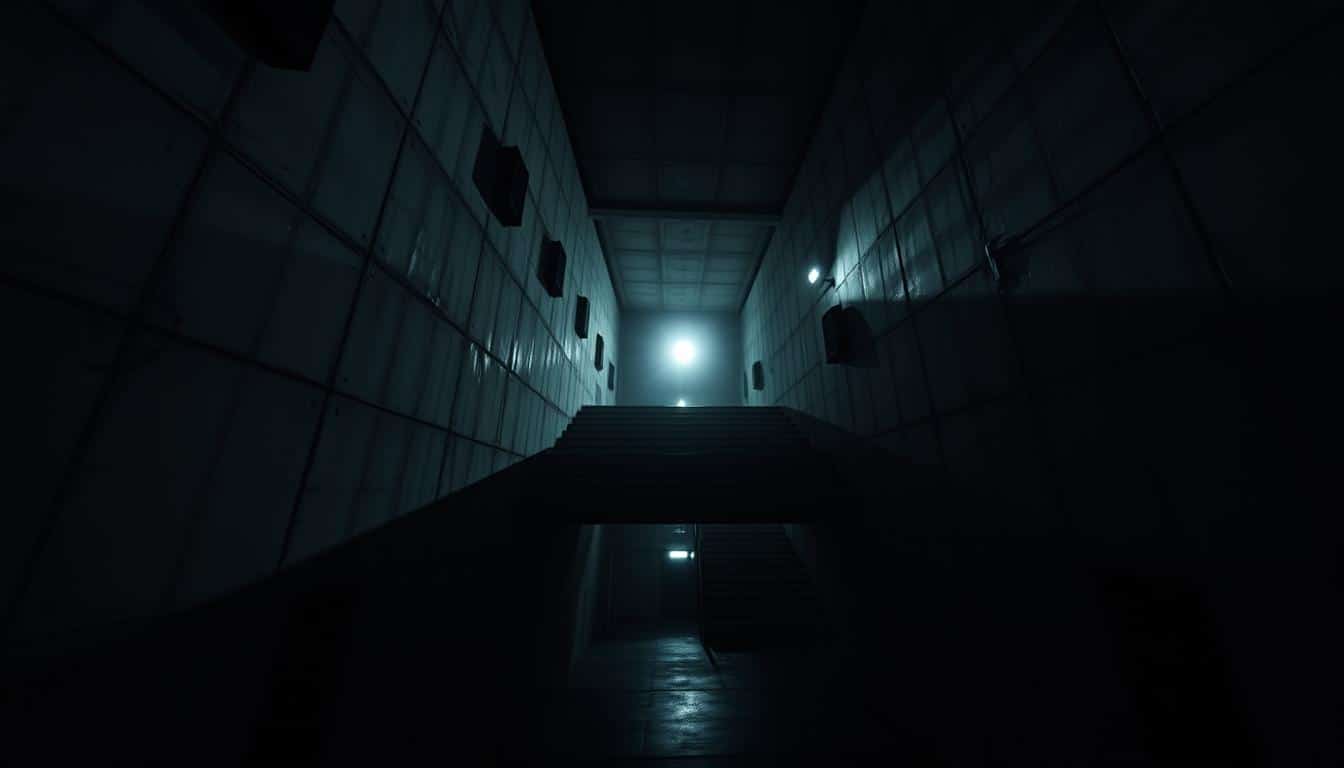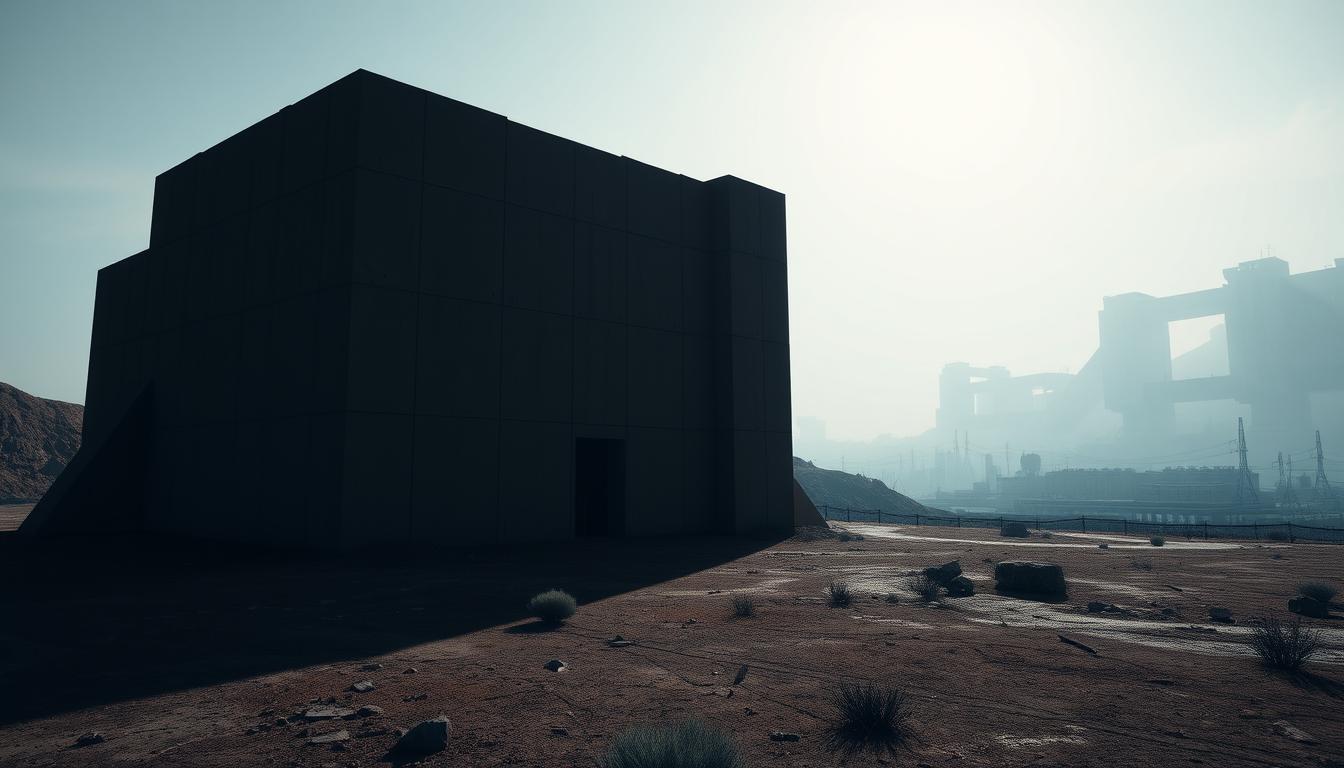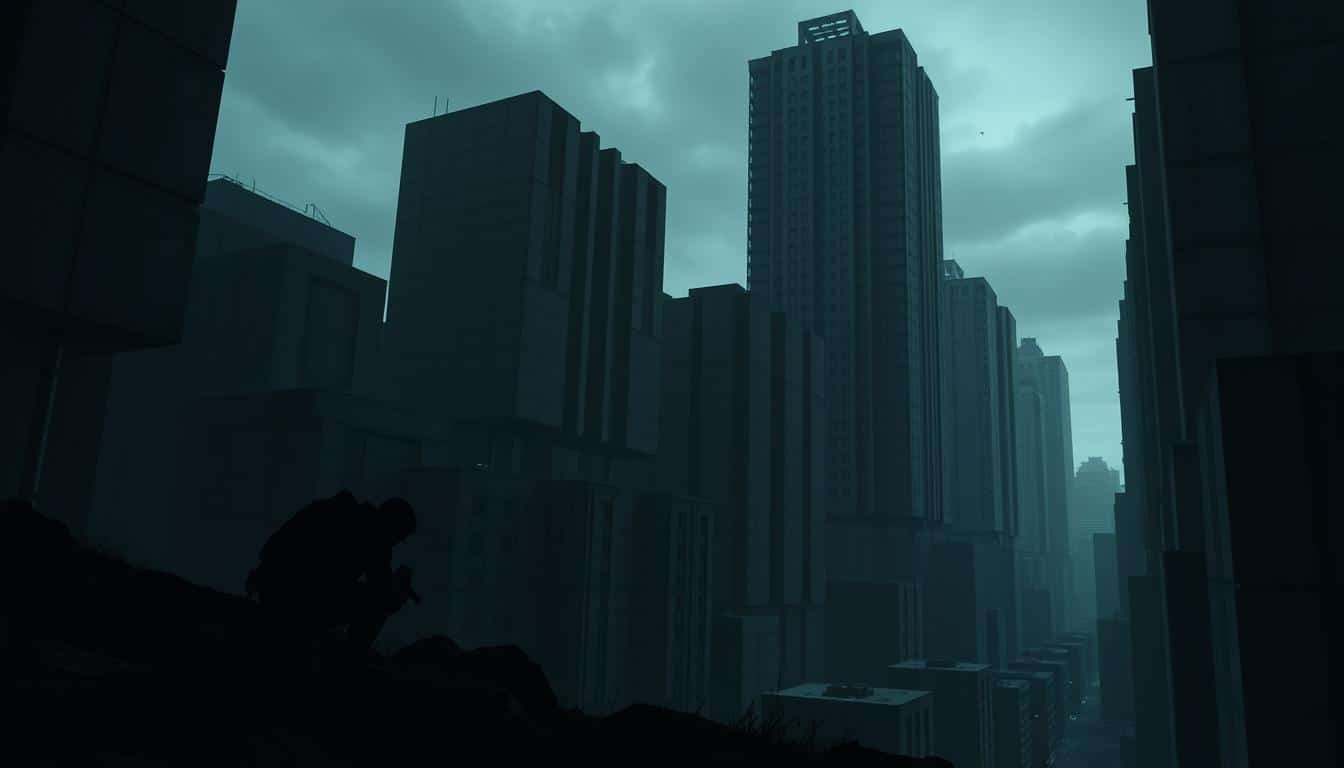As video game stories continue to grow, they use brutalism to tell tales in a fresh way. In games, brutalist architecture stands out with its simple, realistic style. This makes games feel more real and inviting.
We’ll look at how this style helps tell stories in games, making them more engaging. With examples, we’ll see how brutalism’s stark look improves how we experience games. It allows players to dive into worlds where design and story blend uniquely.
Understanding Brutalism in Architecture and Art
Brutalism is a key architectural style that started in the mid-20th century. It mirrors the post-war era’s social and economic struggles. This style focuses on function and aims to build community through public space designs. The history of brutalism shows how concrete became a symbol of tough, simple design during hard times.
Historical Background of Brutalism
The roots of brutalism go back to after World War II. Architects sought new ways to meet society’s needs. They aimed to create buildings that were useful and served a higher purpose. Important features of this style included:
- Use of raw materials like concrete.
- An emphasis on simple, honest designs.
- Building functional spaces for community.
Core Principles of Brutalist Design
The key ideas behind brutalist design are vital for understanding the style. These principles are:
- Functionality: The focus is on the building’s use and purpose.
- Simplicity: Designs are minimal, without extra decorations.
- Materiality: It values the true nature of construction materials.
This approach creates authenticity, linking to contemporary game design’s similar principles. Brutalism’s influence stretches across art, keeping its basic concepts important in shaping spaces today.

The Emergence of Brutalism in Digital Media
Brutalism is now part of the digital world, especially with neo-brutalism becoming popular. This style impacts how we make and view digital content. It prefers simple, bare designs that feel distant and abstract, unlike the comforting, familiar styles we’re used to.
Brutalism’s Transformation in Contemporary Media
Brutalism is changing with digital media’s growth. In today’s designs, it often ditches decoration for simplicity and bold shapes. These designs aim to reflect the complex digital space we navigate. Designers use this style to connect with us clearly in a visually busy world.
Connection to Video Games and Interactive Experiences
Brutalism also influences video games, making interactions and environments more immersive. It uses brutalist architecture to create engaging game worlds. This encourages us to explore and impacts the game’s narrative. Such spaces boost the game experience, highlighting our role in the story.
The Role of Architecture in Game Design
Architecture is key in game design, shaping the gameplay and story. It does more than just look good; it makes games immersive. This affects how players feel and act, guiding them and telling the story better.
How Architecture Influences Gameplay Experience
Game enjoyment is closely linked to its architecture. The design and feel of spaces affect how players move and feel. This changes how engaged they are with the story. For example:
- Intuitive design helps with exploring and solving puzzles.
- Details in settings enhance the mood and tension.
- Well-planned buildings enable unique game actions.
This highlights why good design planning matters for player experiences.
Case Studies of Architectural Influence in Games
“Dishonored” shows the strong role of design in games. Its architecture mirrors the society and drives the plot. This connects players deeper to the game’s world.
In “Bioshock,” the setting of Rapture highlights themes of ideal and downfall. Its architecture affects gameplay and story. This shows the power of well-used architecture.
The Intersection of Brutalism and Storytelling in Gaming
Brutalism in gaming goes beyond its architectural beginnings. It becomes a strong tool for telling stories. With its unique visuals, developers share complex stories and emotions, pulling players into the game’s world. This method creates a bond between the game’s look and its story. It lets players dive deep into the scene, finding meanings they wouldn’t see otherwise.
Brutalism as a Narrative Tool in Games
In games, brutalist architecture tells a story beyond its walls. It mirrors the deep themes and feelings the game makers want to share. Using simple and stark designs helps make the story richer. This way, players get a better feel for the game’s setting. It influences how they understand and connect with the story.
Case Studies in Brutalist Game Worlds
Some games stand out for their use of brutalism to back up their stories. Games like “Inside” and “Journey” prove this point well. They draw players in with a strong emotional pull, with very few words. Instead, they focus on the raw journeys of their characters. These examples show how choosing the right architecture can deepen stories and engage players more.
Environmental Storytelling: Beyond Words
Environmental storytelling brings stories to life in video games using brutalist designs. It lets players dive into worlds full of history and emotion, all without spoken or written words. Through cleverly designed spaces, game developers can tell stories. This way, players themselves unravel the game’s tales by exploring and interpreting their surroundings.
Significance of Environmental Design in Narratives
In many games, the world acts almost like another character. Its design mirrors the game’s core themes and feelings. Brutalist aesthetics use stark visuals to set the mood. Players then explore these spaces. They let the architecture fill them in on the game’s history and emotions.
Examples of Environmental Storytelling in Brutalist Aesthetics
“Dark Souls” and “Hollow Knight” are great examples of this storytelling method. Their atmospheres, shaped by architecture, support the gameplay and tell a deeper story. Every location shows how buildings and spaces can express the game’s lore and emotions. This lets players uncover the game’s story on their own, without everything spelled out for them.
The Impact of Sound and Music in Brutalist Games
In brutalist games, sound is key. It makes the game feel more real and enhances the fun. The sounds and music help build a mood that fits the simple, bold visuals. Good soundscapes make players feel the game’s emotions deeply, matching the raw themes.
Creating Atmosphere with Sound Design
Sound design in brutalist games is carefully made to bring out deep feelings. Ambient sounds shape the adventure, affecting how gamers see different places. Sounds tell a story too. They make the game world more engaging by matching the mood with the action.
For example, small background noises or the shift from quiet to loud can make you feel alone or on edge. This blends sound with the game action neatly.
Case Studies of Sound in Brutalist Contexts
Looking at top games shows sound’s big role in these stark games. In “Journey,” the sounds change with what you do. The game’s music becomes a storytelling tool. It helps players feel connected to the story through what they hear.
This shows how sound and visuals work together. They are both key to making the game impactful.
Player Agency and Interaction in Brutalist Narratives
In brutalist game design, players are central. They make choices that shape the story. This shows how important the game’s setting and design are.
These aspects guide players, changing how they see the story unfold.
How Interaction Shapes the Story Experience
Brutalist environments guide what players can do. Their decisions in these stark worlds change their story. The design influences not just immediate results but the whole story arc.
Examples of Agency in Brutalist Game Design
“Deus Ex: Human Revolution” shows how player decisions lead to different outcomes. The game combines choice with striking architecture. This gives players a rich experience that’s both visually striking and meaningful.
Critiques of Brutalism in Video Games
The exploration of brutalist design in video games has sparked varied opinions. Some praise its bold approach. Yet, others highlight its downsides. These discussions help us grasp its effect on gameplay and story.
Examining the Limitations of Brutalist Aesthetic
Critics argue that brutalism’s starkness might distance players from the story. Its minimalistic designs can make players feel emotionally detached. They worry that focusing too much on style over substance affects the game’s immersion.
Reactions from Players and Critics
Player reactions to brutalist design are mixed. While some enjoy its fresh, experimental style, others have a hard time engaging with the bare brutalist settings. This shows that while brutalist elements can inspire and offer new experiences, they might not appeal to everyone.
Conclusion
In our study of brutalism in game storytelling, we’ve looked at how architecture shapes stories and changes how players feel. We saw that brutalism’s stark, raw looks not only make game worlds more real but also help tell the story. This mix of simple design and deep stories lets players get really into the game world.
As we think about the future, game makers can use brutalism’s strong style to create new kinds of stories. By adding these design elements in smart ways, they can make game experiences that are rich and touch players in many ways. As new ideas come up, it’s important to think about how to mix cool looks with great stories to keep players interested.
This look at buildings and stories shows brutalism’s big chance to change how interactive stories are told. By digging deeper into this area, the game world can make new, bold ways of storytelling. This challenges the usual ways and gets players to explore big, interesting worlds.



